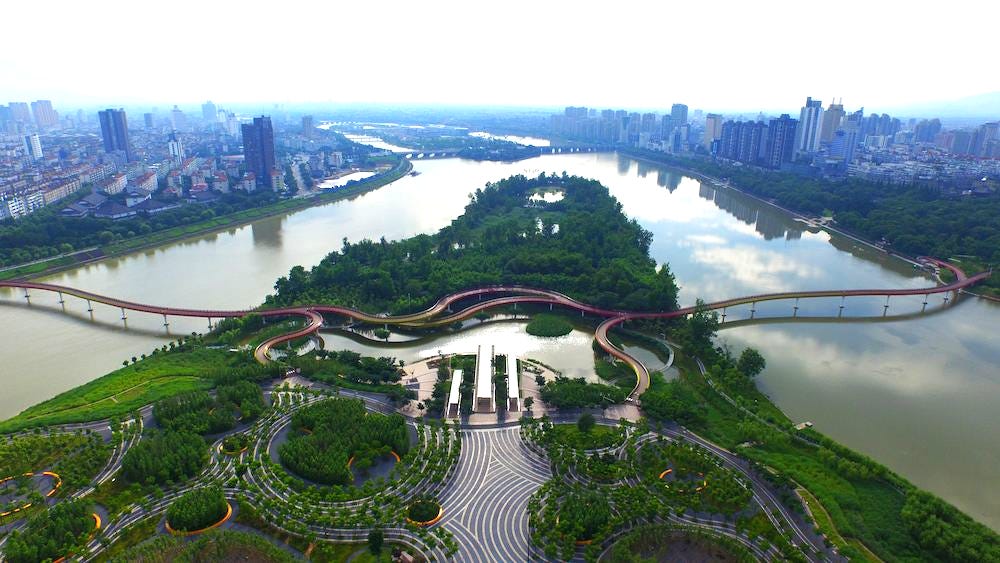Urban green and blue spaces are linked to heart health, study finds
Living near green spaces like parks or blue spaces like rivers is linked to lower chances of developing coronary artery calcification (CAC)

Living near green spaces like parks or blue spaces like rivers is linked to lower chances of developing coronary artery calcification (CAC) in middle age, a key early sign of heart disease. This protective effect is even stronger among Black individuals and those living in poorer neighborhoods.
Researchers found that Black participants with the best access to rivers had a 32% lower chance of CAC compared to those with the least access. Similarly, those with better access to green spaces had up to a 35% lower chance. For every 10% increase in green space, the odds of developing CAC decreased by 15% on average.
The study in the journal Circulation, underscores the health benefits of urban green and blue spaces, particularly for people in underserved communities. "The protective effect of having access to urban blue and green spaces with coronary artery calcification highlighted in our study underscore the potential benefits of such infrastructure, particularly for underserved populations at higher risk for cardiovascular disease,” said Dr. Lifang Hou, the study's lead author and a professor at Northwestern University Feinberg School of Medicine.
“Our findings provide quantitative evidence supporting environmental policies to enhance the accessibility and quality of residential blue and green spaces, which can promote public health benefit and address racial and neighborhood-related health disparities,” she continued.
According to Dr. Hou, green and blue spaces offer more opportunities for physical activities, social interactions, stress relief, and relaxation, all of which are linked to better metabolic and cardiovascular health.
“Additionally, exposure to green and blue spaces has been shown to boost people’s immune system, reduce chronic inflammation, and slow down the biological aging process,” she said. “More studies are needed to fully understand the role of urban natural environments in pathways related to human health.”
Related Stories
Interestingly, the study also found that living closer to parks was associated with a higher likelihood of CAC in poorer neighborhoods. People with the easiest access to parks had a 29% higher chance of developing CAC than those with less access.
“The poor condition of parks and/or safety concerns in underserved urban neighborhoods might deter park use and prevent residents from fully benefiting from these spaces,” explained Kyeezu Kim, the study's first author and an assistant professor at Sungkyunkwan University School of Medicine in South Korea. “From a public health perspective, the results suggest the need for quality control and management of the surrounding environment in neighborhoods with disadvantaged social determinants of health.”
The study involved 2,960 Black and white men and women, with an average age of 50, from Birmingham, Chicago, Minneapolis, and Oakland. These participants were followed for 25 years, from 1985-1986 to 2010-2011. The data came from the Coronary Artery Risk Development in Young Adults (CARDIA) study, a long-term research project that began in 1985 with over 5,000 participants.
For this analysis, researchers focused on the presence of green and blue spaces near participants' homes and measured CAC using CT scans when the participants were about 50 years old.
The study's focus on social determinants of health, such as race and neighborhood socioeconomic status, highlights important disparities in cardiovascular health. "While proximity to urban blue and green spaces has been linked to better cardiovascular health, few studies have examined the role of social determinants of health, such as race and neighborhoods with lower socioeconomic status in these associations," Dr. Hou noted.
The findings of this study suggest that improving access to quality green and blue spaces could be a powerful tool for promoting public health, especially in underserved communities. By investing in these natural environments, policymakers can help reduce health disparities and support the well-being of all residents.
The study provides a compelling case for the importance of environmental policies that enhance the accessibility and quality of green and blue spaces in urban areas. Such policies not only promote better health outcomes but also address critical issues of equity and social justice.
Living near green and blue spaces can significantly reduce the risk of developing early signs of heart disease, especially for Black individuals and those living in economically disadvantaged neighborhoods. The study's findings highlight the need for continued research and policy efforts to create healthier, more equitable urban environments.
Note: Materials provided above by The Brighter Side of News. Content may be edited for style and length.
Like these kind of feel good stories? Get the Brighter Side of News' newsletter.



